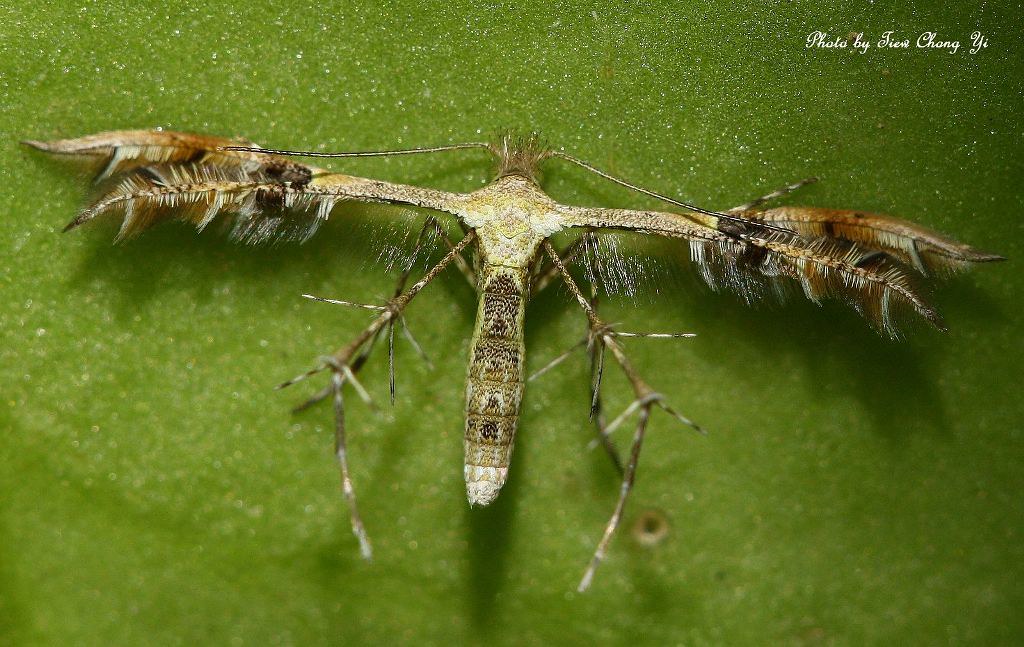I would like to tell you that using a tripod is a must... but I am not going to say that. Well... lets face it this way... you are out looking for the creepy crawlie... something came up... you set up your tripod... attach your remote control, put your camera there, and by the time you are ready, our friend had ran off or fly off, or crawled off... so there is only one or two things you could do... set up your tripod already... then wait in a spot for something to happen... afterall, they say photography is a test of your patients too.

ISO: 400
Shutter Speed: 1/40
Apeture: f/7.1
But, I am not someone who wait for things to happen, I look around for interesting subject. And so I normally hand held my camera. Taking the photo above photo, this lovely plume moth simply flew into view... if I was to set up my tripod and stuff, it would have flown off again... and maybe during the setting up of my tripod, I will have disturbed it or even accidentally killed it.
When shooting of macro, my setup is usually,
1) DSLR
2) EF 100mm f2.8 macro
3) external flash
Well... this is a good setup... of course there are other alternative, like using a Raynox 250 or a closeup lens like the 500D (not to mistaken with Canon's DSLR). But I cannot bother with these setup and just get a dedicated macro lens. It had a 1:1 magnification and so I can take pretty good and detail shot of my subject close up. The Raynox or close up lenses are very good addon to your normal lenses and allow you to shoot pretty close. But remember, you would have to be very very quiet and silent in order not to scare your models into flying off.
ISO: 400
Shutter Speed: 1/30
Aperture: f/11
More important than anything else, your external flash is something that you would not want to leave home without when shooting macro shots. Note that most macro lens do not have build in image stabilizer, and a slight movement of the lens will be translated into massive blurr in your pic because of the magnification of the lens. And do note that when shooting macro, you need to close your aperture to pretty small... thus your shutter speed will be affected and so an external flash is needed for you to reach the speed that you can comfortably hand held.
ISO: 400
Shutter Speed: 1/200
Aperture: f/9
As seen in the above photo, the creepy crawlie was actually suspended on a single line of silk, and there is a slight bleeze blowing... if my shutter speed is not fast enough, I would never be able to capture this cute little fella, and it is impossible without my flash.
Anyway, when you are outfield doing macro... do note that there are other people shooting macro too. Try not to walk too heavily, or talk too loudly. The last thing a macro photographer wanted was that he had been positioning his camera, setting focus and stuff for a while... then some idiots simply stomp past and his subject flew off... or escape.
And when you are taking macro shots, try to be observant of your surrounding... not just to spot the lovely creatures... but not to step on them. And also macro photographers like to get as close to their models as possible... so many a time, we will be on the ground... and we do not appreciate it when you step on us or on our model.


No comments:
Post a Comment